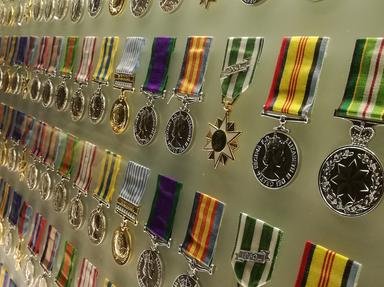Quiz Answer Key and Fun Facts
1. Shortly after the invention and successful trials of the Gatling machine gun, this individual refused to use any to remove "a small Indian village" from the banks of a Montana river. The outcome was the devastation of the celebrated U.S. Seventh Cavalry Regiment. Who was this regiment's lieutenant colonel and commanding officer who died with 267 of his men?
2. The Battle of Antietam (or Sharpsburg), the bloodiest day of the American Civil War, was lost by the Confederate forces in part because of a colossal blunder. What was it?
3. Two infamous military leaders living in different segments of European history both decided to invade a country that would prove to be the undoing of their empires. Napoloeon was one of these leaders; Hitler was the other. Which country did they foolishly decide to invade?
4. In 1836, this Mexican president and general decided to wipe out a small force of Texas revolutionaries making a defensive stand in an old Spanish mission known as the Alamo. Who was this military leader who won the Battle of the Alamo at the cost of losing the war and losing all of Texas?
5. In 1915, the Western Front of World War I had become a stalemate between Allied and Central forces while Russian forces on the Eastern Front lacked motivation. Britain and France decided to create a third front by attacking the Ottoman Empire at Gallipoli. What British politician dreamed up this plan that ended in absolute failure?
6. On December 24, 1979, the Soviet Union decided to become involved in another country's civil war. The result was a nearly decade-long war that cost the Russians a great number of lives and a great amount of money--all for no gain. What country did the Soviets invade?
7. A famous admiral once spoke of his nation's military blunder with the following words: "I fear all we have done is to awaken a sleeping giant and filled him with terrible resolve". To what event was this admiral referring?
8. On October 25, 1854, during the Battle of Balaclava of the Crimean War, Lord Cardigan led the Light Brigade (of the British cavalry) into "the Valley of Death" to storm Russian troops on the other side. This foolish charge resulted in the loss of several British soldiers, and the British gained nothing. Why did the charge occur in the first place?
9. In 217 BC, 30,000 Roman soldiers marched to launch an attack against Hannibal and his army at the point where his camp was believed to be. Instead, Hannibal and his troops ambushed the Romans, forcing many of them to drown. What is the name of this famous battle?
10. On August 19, 1942, Canadian and British forces attempted a landing in German occupied France. The result was a large-scale massacre--for the Allied forces, that is. This ill-fated World War II invasion is referred to as what?
Source: Author
alaspooryoric
This quiz was reviewed by FunTrivia editor
bloomsby before going online.
Any errors found in FunTrivia content are routinely corrected through our feedback system.

